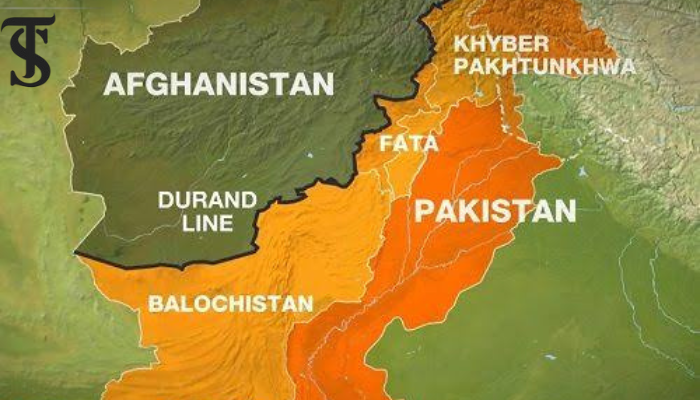Contested Waters: The South China Sea Conflicts Threaten Regional Stability

- Geopolitical Tensions – The South China Sea dispute highlights competition for dominance, involving China, the U.S., and ASEAN nations, driven by strategic interests.
- Economic & Strategic Importance – The sea holds vast oil and gas reserves and serves as a crucial global trade route, escalating territorial conflicts.
- Diplomatic Challenges – Despite ASEAN's efforts, internal divisions hinder conflict resolution, necessitating international cooperation to maintain stability.
The South China Sea conflict has become contentious, with far-reaching ramifications for East and Southeast Asian regional stability since Dec 2013. China’s military began creating artificial islands in the Spratly Islands, anchoring them with seven coral atolls until Oct 2015. The building site covers more than 3,000 acres, and it is where the military equipment is stored and the personnel staff live. Realistically, the conflict shows competition for dominance among the states, inspired by the urge to safeguard regional strategic interests. Neighboring nations are increasingly becoming cognizant of the ramifications of China’s growth as a superpower. As such, the countries have adopted soft realism approaches to adapt or fight China’s increasing influence through a collective framework. The significance of the sea stems from its economic value, strategic location, and role in influencing the region’s power dynamics.
The threat to the region’s stability is seen through the sea’s positioning as a resource-rich maritime zone, rendering it susceptible to conflict as a result of the opposing naval forces and territorial issues. Military activities in the sea, sporadic standoffs, and clashes continue to be a significant source of tension, threatening the region’s peace and security. Accordingly, the sea, which stretches over 3.5 million square kilometers and is bordered by the Association of Southeast Asian Nations (ASEAN) nations, has emerged as a huge geopolitical concern. Furthermore, China’s contentious “9-dash line” claim to an estimated 80% of the sea has prompted disagreements with states like Vietnam, which historically uphold their claims to the source. Moreover, the discovery of enormous oil and gas deposits in 1979 raised the region’s economic and strategic prominence, driving competition for territorial claims. The dispute is still a significant geographical concern as roughly a third of the international shipping goes through the region annually, showing that almost a quarter of trading globally uses the route, translating into similar value, hence the enormous effort by the conflicting countries to lay claim to the area.
Direct warfare between superpowers has proven risky if history is anything to go by. The aggressive Chinese measures in the sea will likely create hostilities between the U.S., China, and ASEAN if the appropriate measures are not taken to quell the emerging tensions. The probable damage is further aggravated because neither side typically emerges victorious, as evidenced by previous cases, albeit by different countries. Superpowers often engage in indirect battles via proxies in vital locations to safeguard their global dominance while undermining one another’s strategic goals. The rising tension between the global superpowers evidences the geopolitical dynamic. The fight between the two nations is slowly becoming more like the Cold War in that instead of confrontations, the countries seek to outdo each other on numerous fronts.
The reigning superpower, the United States, is actively working to prevent China’s ascent, particularly in technology, economics, and diplomacy. Due to the relatively substantial geographical distance, the possibility of a direct war is minimal, but that does not deny the possibility of a military war. Additionally, there have been several attempts to ensure that multilateral efforts effectively deal with emerging issues. For example, ASEAN, a pioneer in East Asia’s economic integration, was formed in 1967. To ensure regional cooperation, the countries involved included Indonesia, Malaysia, Singapore, Thailand, and the Philippines. The implications of such efforts have had varied outcomes. Even though the organization has sought to mediate elements like the Code of Conduct (CoC) negotiations, internal divisions have hampered cohesive action.
The assessment of the implications of ASEAN’s economic integration has been widely mixed. The dispute presented the limits of global diplomatic moves fostered by organizations like ASEAN to deal with aggressive conduct as they mainly advance certain countries’ agendas. The result has been that small nations avoid confrontations with China while it advances its power without focusing on the issue. Likewise, such entities as the ASEAN have been applauded for standing firm in delivering their integration mandate. Nevertheless, the progress has been minimal compared to the outcomes of similar well-established organizations, such as the European Union. Specific elements have been negatively affected, like the efforts to eliminate non-tariff barriers, while others have recorded significant positive outcomes, such as eliminating tariffs.
Additionally, there have been concerns regarding whether disputes concerning commercial contracts can be taken through arbitration, considering the lack of clarity based on Chinese law. Specific landmark rulings, such as Shell v. Huili in the People’s Court, provided significant guidance. However, the verdict might have contradicted the principle of international comity within the prevailing transnational dispute resolution tactics.
In summary, the struggle for the ownership of the sea is more than a mere regional concern; it signifies a battle between emerging and established nations. The water body’s strategic importance, immense riches, and geopolitical significance make it a vital link in international trade and a possible flashpoint for conflict. To avoid experiencing instability, stakeholders must employ innovative and collaborative approaches. Notably, international frameworks can be vital in promoting diplomacy and economic interdependence over military and conflict where nations form collaborative resource-sharing agreements, ensuring equal access to the South China Sea’s richness while lowering tensions.
Achyuth Anil
The author holds a Bachelor's degree in International Relations from the Central University of Kerala. He is currently pursuing a Master's degree in European Studies, specializing in Politics and International Relations, at the Manipal Academy of Higher Education.





